ML4Q Concepts
Series #2: Near-term quantum algorithms and applications
The second ML4Q Concepts seminar series on near-term quantum algorithms and applications was organized by by Markus Müller (RWTH Aachen/FZ Jülich), Sebastian Diehl (University of Cologne), Fabian Hassler (RWTH Aachen), and Roman Riwar (FZ Jülich) and took place from April to June 2021. The follow-up series can be found here.
The seminar recordings are available for all members and cluster associates on the internal website. If you do not have access, please drop a line to the ML4Q office.
Seminar schedule
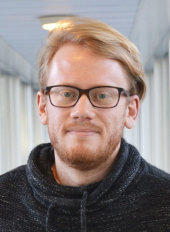
15 April 2021, 11:00
Tom O’Brien (Google Quantum AI):
How to use verified phase estimations
Verified phase estimation (arXiv:2010.02538) is a novel error mitigation method relying on the fact that one may effectively post-select a phase estimation experiment on returning to its initial state without losing data or distorting the signal. This effectively catches all errors that do not return the system to a two-dimensional subspace (hidden inside the global 2^N-dimensional Hilbert space). Initial numeric results show the ability to suppress common error channels completely at first or even higher order, and at reasonable error rates we witness error mitigation by factors of up to ten thousand. In this talk, I will detail the theory behind verification, and explain how it can be used for expectation value estimation (e.g. within a variational quantum eigensolver).
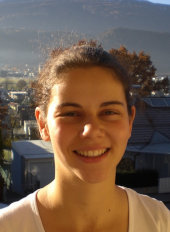
22 April 2021, 11:00
Christine Maier (U Innsbruck)
Quantum simulations with trapped ions
Trapped ions are very suitable candidates for realizing quantum simulators because they provide us with excellent control over all quantum degrees of freedom: we can repeatedly and reliably prepare a quantum state, control its dynamic evolution, generate entangled states and carry out quantum measurements with high efficiency. In our experiment, we encode spin-1/2 particles into the electronic states of a string of trapped calcium ions. Laser beams are used to generate an effective spin-spin interaction of variable range and a tightly focused laser beam allows for single-qubit control.
In the first part of my presentation, the experimental setup and its capabilities are introduced. I explain how we engineer the spin-spin interaction and present some observed properties [1, 2]. In the second part, I discuss how we apply this interaction and the single-qubit control to perform variational quantum simulation with up to 20 qubits [3].
[1] N. Friis, O. Marty, et al., PRX 8, 021012 (2018) (arXiv:1711.11092)
[2] C. Maier et al., Phys. Rev. Lett. 122, 050501 (2019) (arXiv:1809.07680)
[3] C. Kokail, C. Maier, R. van Bijnen et al., Nature 569, 355 (2019) (arXiv:1810.03421)
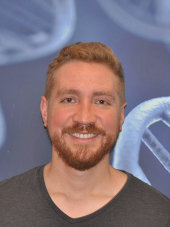
6 May 2021, 16:00 (note the afternoon slot!)
Marco Cerezo (Los Alamos National Laboratory)
Prospects and Challenges for Training Quantum Neural Networks
Quantum Neural Networks (QNNs), and Variational Quantum Algorithms (VQAs) have the potential to enable the first practical applications of quantum machine learning on near-term noisy devices. At their core, both QNNs and VQAs train the parameters in a neural network (or a parametrized quantum circuit) to minimize a cost function which encodes the information of a problem. While many different architectures have been proposed, most of them are heuristic methods with unproven scaling that can guarantee that the optimization can be successful. In fact, one of the few rigorous results which analyze the trainability of the parameters is that the cost landscape can exhibit the so-called barren plateau phenomena, where the cost function gradients vanish exponentially with the system size. In this talk, we will discuss the importance of performing rigorous scaling analysis on the trainability of QNNs and VQAs, and we argue that such study should be a staple for the community. We then review recent results where we analyze the trainability of different types of QNNs.
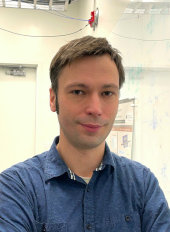
20 May 2021, 16:00 (note the afternoon slot!)
Hannes Bernien (U Chicago)
Engineering quantum processors and quantum networks atom-by-atom
The realization of large-scale controlled quantum systems is an exciting frontier in modern physical science. Such systems can provide insights into fundamental properties of quantum matter, enable the realization of exotic quantum phases, and ultimately offer a platform for quantum information processing. Recently, reconfigurable arrays of neutral atoms with programmable Rydberg interactions have become promising systems to study such quantum many-body phenomena, due to their isolation from the environment, and high degree of control. I will show how these techniques can be used to study quantum phase transitions in spin models with system sizes up to 51 qubits and to create a 20 qubit GHZ entangled state. Furthermore, I will introduce a new dual species atomic array in which we can use the second species to control and measure the first which opens up applications in quantum state engineering and quantum feedback.
An alternative, hybrid approach for engineering interactions is the coupling of atoms to nanophotonic structures in which photons mediate interactions between atoms. Such a system can function as the building block of a large-scale quantum network. In this context, I will present a novel quantum network node architecture that is capable of long-distance entanglement distribution at telecom wavelengths.
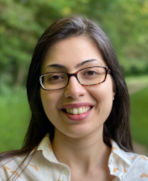
10 June 2021, 16:00 (note the afternoon slot!)
Shruti Puri (Yale U)
Quantum error correction with superconducting bosonic qubits
In a superconducting bosonic qubit, quantum information is encoded in non-classical states of microwave photons confined in a superconducting resonator mode. A bosonic qubit can be made more noise resilient due to active error-correction or suppression applied directly to the resonator mode. Since we start with a less noisy system, subsequent concatenation with an error-correcting code can potentially be much more efficient. In this talk I will present strategies for practical, scalable, quantum error correction with superconducting bosonic qubits and discuss the conditions under which they can outperform conventional qubit technologies.